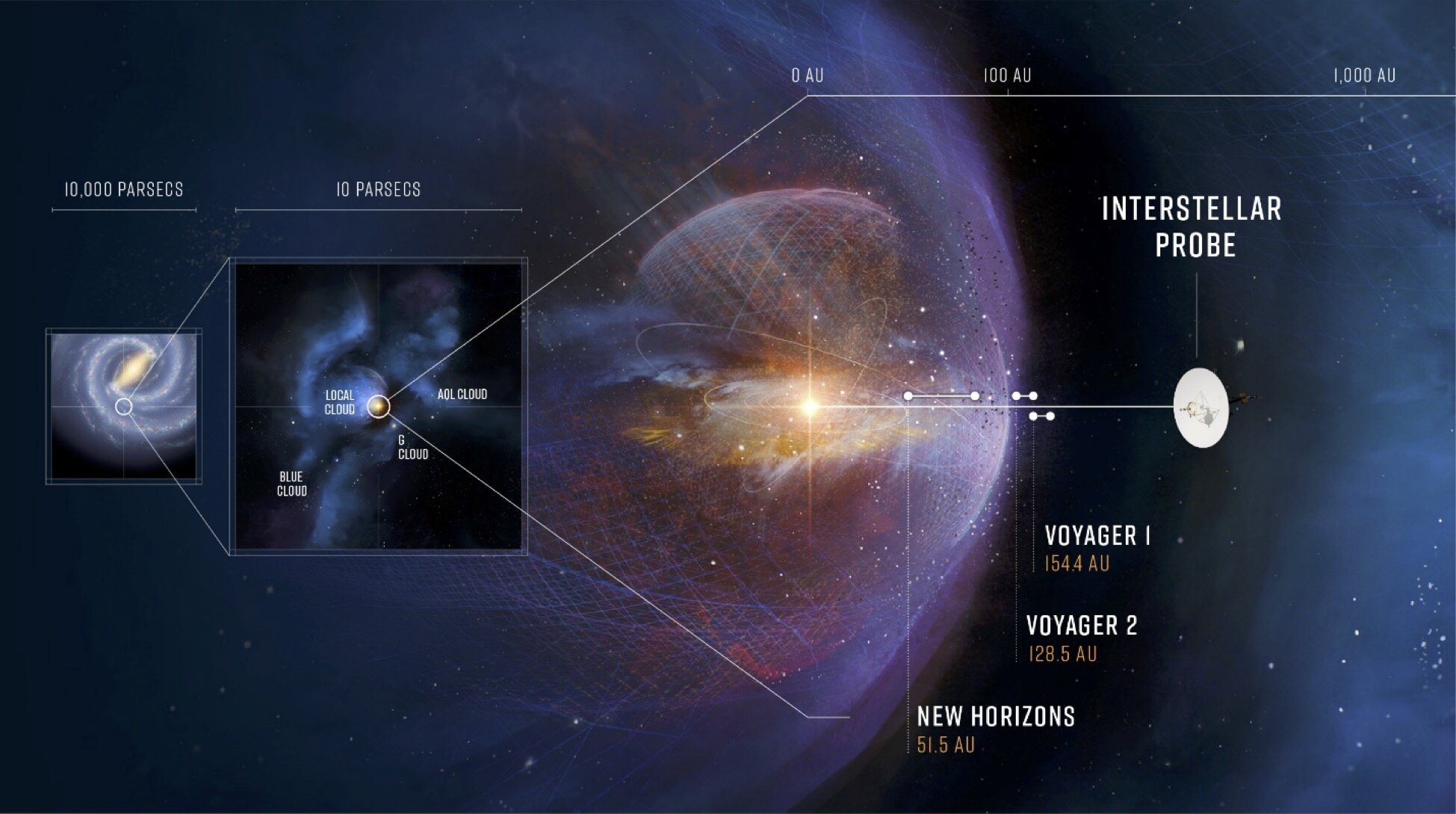Our yearning to unravel the cosmic tapestry extends far beyond the familiar realm of our solar system. The boundless expanse of interstellar space, teeming with celestial wonders and unanswered questions, beckons us to venture forth.
A critical first step in this grand endeavor is venturing beyond the heliosphere, the protective bubble inflated by the Sun’s wind and magnetic field. This cosmic shield safeguards our solar system from the relentless bombardment of galactic cosmic rays, but its exact contours and boundaries remain veiled in some degree of mystery.
Unveiling the Heliosphere’s Secrets
To pierce the veil of the unknown and delve deeper into the interstellar medium, scientists are meticulously planning a future mission – an interstellar probe. This intrepid explorer will embark on a groundbreaking journey beyond the heliosphere, gathering invaluable data about the composition and characteristics of this enigmatic region. A recent study led by the University of Michigan and published in Frontiers in Astronomy and Space Sciences sheds light on the optimal trajectory for this pioneering mission.
The heliosphere’s shape is not a static, perfectly symmetrical bubble. It’s a dynamic entity, sculpted by its interaction with the local interstellar medium. This interaction is particularly pronounced at the heliosphere’s tail, where the Sun’s wind stretches outwards like a cosmic windsock. The researchers behind the aforementioned study propose a strategic exit point for the interstellar probe – the flank of the heliosphere’s tail.
Why the Tail Holds the Key
This tailored trajectory offers a multitude of benefits. By exiting through the side rather than directly out the front, the probe gains a more comprehensive perspective on the heliosphere’s overall shape and size. It’s akin to wanting to determine the length of your house; you wouldn’t simply stand at the front door and take a picture – a side view would provide a much clearer picture (literally, in this case).
Furthermore, the tail region presents a unique opportunity for directly sampling interstellar plasma, the exotic material that fills the space between stars. Current models suggest that this pristine interstellar plasma might be funneled directly into the heliosphere through the tail. By strategically positioning the probe in this region, scientists could gather samples of both the interstellar medium residing outside the heliosphere and the interstellar material that has infiltrated our cosmic bubble. This comparative analysis would provide invaluable insights into the composition and behavior of interstellar material.

Finally, studying the tail end of the heliosphere would provide valuable insights into the intricate dance between our solar system’s protective shield and the vast interstellar medium. Understanding this interaction is crucial for comprehending how the heliosphere safeguards our solar system from harmful galactic cosmic rays and how it shapes the environment within which our planets exist. This knowledge is essential for understanding the potential habitability of exoplanets residing in similar environments around distant stars.
Beyond Voyager: A New Dawn of Exploration
The Voyager 1 and 2 spacecraft, currently humanity’s farthest flung emissaries, have ventured far beyond the planets of our solar system. However, their precise location relative to the heliosphere’s boundaries remains a topic of debate. A future interstellar probe mission would be specifically designed for this purpose. Envisioned as a 50-year odyssey, with a targeted distance exceeding 1,000 astronomical units, this intrepid explorer would provide humanity with unprecedented views of the heliosphere and the interstellar frontier beyond.
The University of Michigan study represents a significant leap forward in planning this groundbreaking mission. By optimizing the probe’s trajectory, scientists can ensure it gathers the most crucial data as we embark on this historic voyage of discovery into the interstellar unknown. This mission has the potential to revolutionize our understanding of our place in the galaxy, providing a deeper look into the vast cosmic ocean that surrounds us, and potentially paving the way for future interstellar travel. Imagine – humanity, not just as observers of the cosmos, but as explorers venturing into the unknown, unraveling the mysteries that have captivated us for millennia. The interstellar probe mission is a stepping stone on this exciting path of discovery.



















